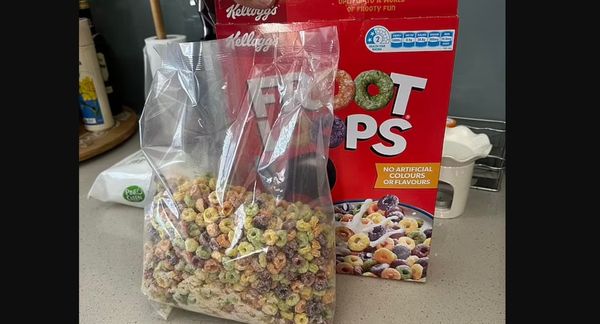A mother from Victoria, Australia, recently had a shocking experience when she bought a box of Froot Loops for $10 only to find it barely half full. Renee, the frustrated mother, expressed her disappointment, especially since her children love Froot Loops and are not keen on switching to other cereals.
Renee took to Facebook to share a picture of the partially filled bag, which sparked outrage among hundreds of other shoppers who could relate to her frustration. The consensus was that paying $10 for half a bag of cereal is outrageous and akin to “highway robbery.”

“This is a lesson learned for me,” Renee admitted. “From now on, I’ll only buy Froot Loops when they are on special because they never last more than a week in my family of four.”
Other shoppers chimed in, expressing their astonishment at the exorbitant cereal prices. They likened it to buying a bag of chips with only a few chips and mostly air. Many felt that companies were taking advantage of hard times and ripping off Australian consumers.
Some commenters even reminisced about how cereal bags used to be much fuller in the past, indicating a perceived decline in product quantity over time. In response to the rising prices, one mother shared her strategy of buying cereals when they are half-price and stocking up for the period until the next discount.
However, not everyone understood why some people hesitated to switch to cheaper off-brand cereals. According to some shoppers, alternatives like the Aldi brand tasted the same and offered more quantity for a lower price.
To shed light on the issue, one commenter explained that cereal is sold by weight, not volume. The air in the bag serves to protect the cereal from getting crushed during transportation. This principle applies to all goods sold in similar packaging.
The conversation about the cost of everyday items like cereal reflects broader concerns about the affordability of living expenses, particularly during challenging economic times. As prices fluctuate, shoppers are adopting strategic habits and exploring alternative brands to manage their household expenses effectively.
In an era where every dollar counts, consumers are scrutinizing their purchases more closely to find value without compromising on quality. As the cost of living continues to rise, families are prioritizing affordability while striving to make ends meet.





